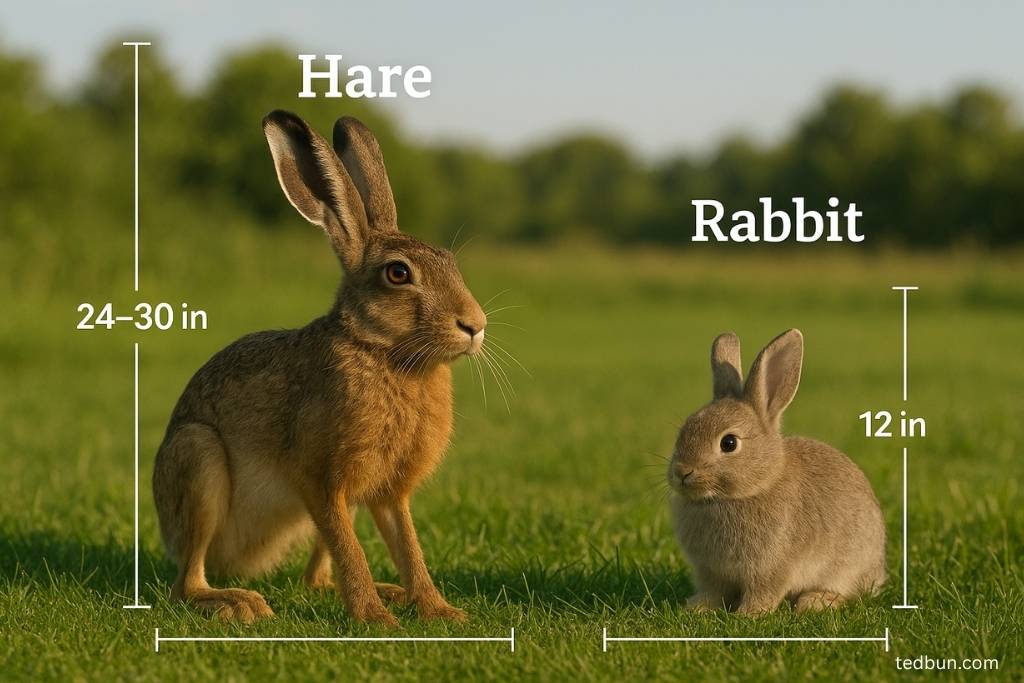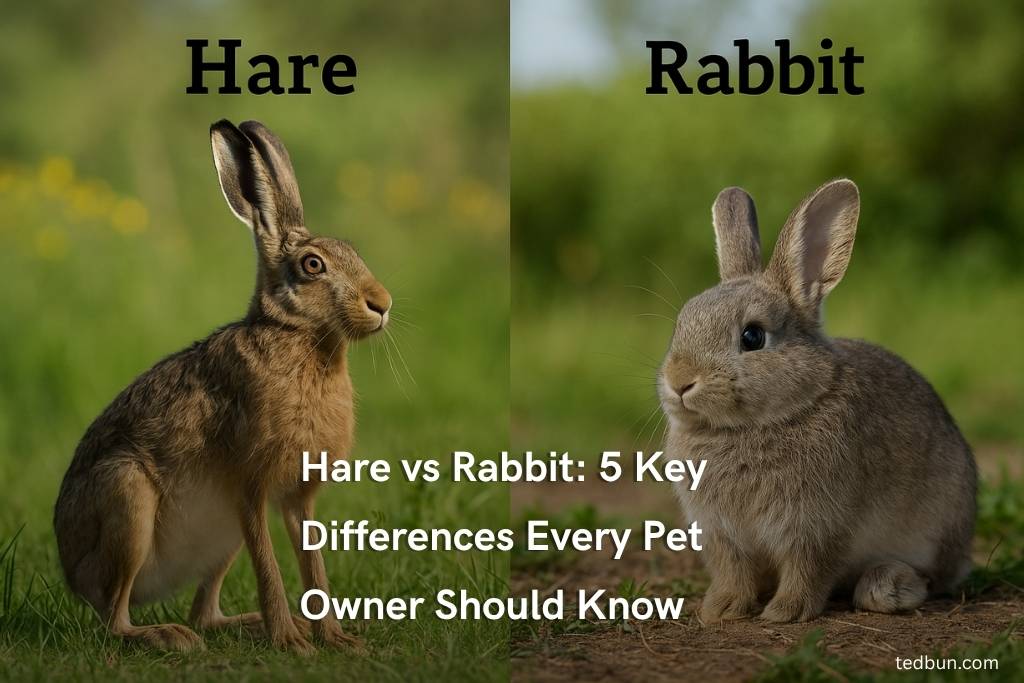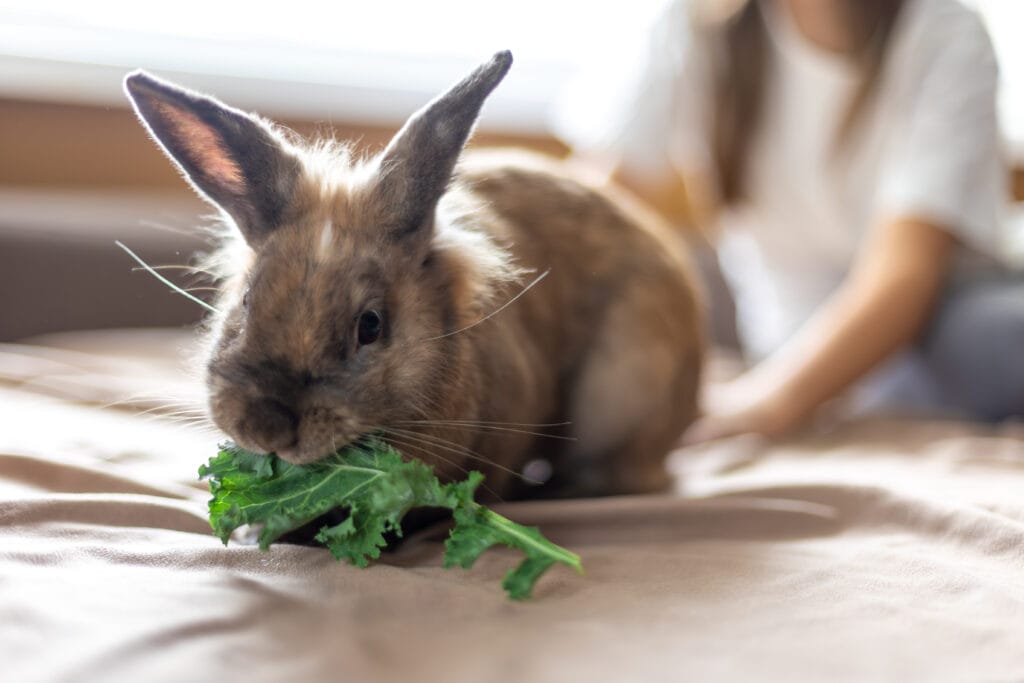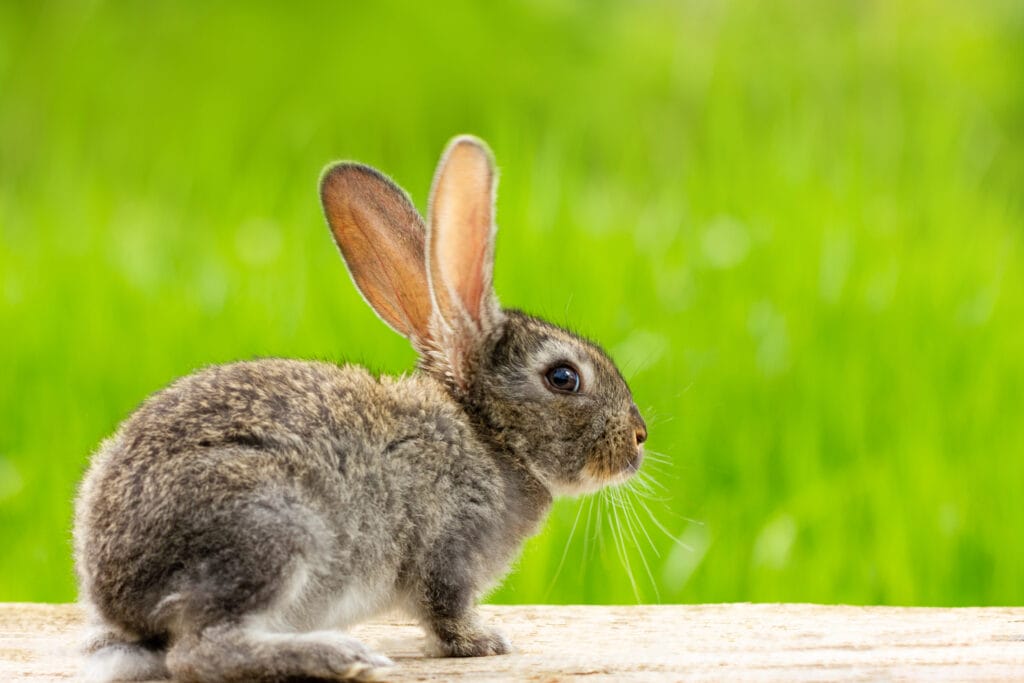Introduction
Have you ever seen a long-eared, fluffy creature darting across a field and wondered, “Is that a rabbit or a hare?” The difference between a rabbit and hare often puzzles pet owners and wildlife enthusiasts alike. While these animals share some similarities, their unique traits, behaviors, and needs set them apart. For rabbit owners, knowing the difference between hare vs rabbit can deepen your appreciation for your pet and help you make informed care choices.
Similarly, knowing the rabbit vs hare distinction can spark curiosity about wildlife. In this detailed exploration, we’ll cover five key differences between hares and rabbits, from their physical features to their lifestyles, so you can confidently tell them apart. Plus, we’ll clear up common questions like can rabbits and hares breed and explain terms like bunny vs rabbit vs hare. Let’s hop into the world of these fascinating creatures!
Are Hares and Rabbits Related?
To kick things off, let’s clarify the connection between these furry friends. Both rabbits and hares belong to the Leporidae family within the Lagomorpha order, alongside pikas. This means they’re closely related, sharing features like long ears, powerful hind legs, and herbivorous diets. However, the difference between a hare and a rabbit lies in their genus: rabbits fall under genera like Oryctolagus (e.g., European rabbits), while hares belong to Lepus (e.g., brown hares).
Here’s a fun fact: hares have 48 chromosomes, while rabbits have 44, making crossbreeding impossible. So, if you’ve ever wondered, can rabbits and hares breed, the answer is a firm no due to this genetic barrier. This distinction sets the stage for understanding the rabbit vs hare comparison, as their differences go far beyond looks. Let’s explore the five key ways they differ, starting with their physical traits.

1. Size and Physical Traits
When comparing hare vs rabbit, one of the first things you’ll notice is their appearance. Rabbits are generally smaller, measuring 20–40 cm long and weighing 1.2–2 kg, with shorter, rounded ears and soft, fluffy fur. Think of cuddly domestic breeds like Holland Lops or Mini Rex, which are bred for their compact, adorable builds. Their bodies are designed for comfort, making them ideal as pets.
In contrast, hares are larger, reaching up to 70 cm in length and weighing 2–5 kg, with leaner, more muscular frames. Their ears are longer and often pointed, sometimes with black tips, as seen in species like the brown hare (Lepus europaeus). Hares also have longer, stronger legs built for speed. To spot the difference between rabbits and hares, check the ears and legs: hares have angular, elongated features, while rabbits are more compact and cuddly.
For pet owners, this distinction matters. Rabbits’ smaller size makes them easier to house in hutches, while hares’ larger, wilder build suits open landscapes. If you’re ever unsure whether you’re looking at a rabbit or a hare, the rabbit vs hare size difference is a quick clue—hares are the taller, leaner cousins.
2. Habitat and Lifestyle
Next, let’s look at where these animals live and how they behave, as the difference between a hare and a rabbit shines through in their lifestyles. Rabbits are social creatures that thrive in groups, often living in complex underground burrows called warrens. These cozy homes provide safety from predators, and rabbits prefer habitats like grassy meadows, forests, or gardens with dense cover. As a rabbit owner, you might notice your bunny loves company, whether it’s other rabbits or your attention. This social nature makes rabbits excellent pets for those willing to provide interaction and space.
Hares, on the other hand, are solitary and prefer a more independent lifestyle. Instead of burrows, they create shallow, above-ground nests called forms, often hidden in tall grass or under bushes. Hares favor open habitats like fields, grasslands, or woodlands, where they can rely on their speed to escape threats. This solitary habit is a key difference between hares and rabbits—hares don’t crave companionship like rabbits do.
For pet owners, this means rabbits are far better suited to domestic life. Hares’ wild, solitary nature makes them unsuitable as pets, as they’re happiest roaming free. When considering rabbit vs hare for your home, stick with rabbits for their social, adaptable demeanor.
3. Diet and Feeding Habits
Another clear difference between rabbits and hares lies in what they eat and how they forage. Rabbits prefer softer, more tender foods like grass, leafy greens, clover, and vegetables such as carrots or lettuce. They tend to stay close to their burrows while eating, nibbling on plants within a safe radius. As a rabbit owner, you can mimic this natural diet by offering hay, pellets, and fresh veggies like kale or romaine. Avoid tougher foods like bark, as rabbits’ digestive systems are tuned for softer fare.
Hares, by contrast, have a tougher diet to match their rugged habitats. They eat bark, twigs, cereal crops, and even woody plants, which suit their open-field lifestyle. This dietary difference highlights the hare vs rabbit contrast—hares are built to handle coarser vegetation, while rabbits stick to gentler options.
For pet owners, this distinction is practical. Feeding your rabbit a hare’s diet (e.g., bark or twigs) could upset their stomach. Instead, focus on a balanced diet of hay, veggies, and limited treats to keep your bunny healthy. Knowing the difference between a rabbit and hare in diet helps you make smart choices for your pet’s nutrition.
4. Reproduction and Young
The difference between hares and rabbits becomes even more apparent when you look at their reproductive habits and young. Rabbit babies, called kits, are born altricial—hairless, blind, and helpless—after a short gestation period of 30–31 days. They rely on their mother’s care in the safety of a burrow for several weeks before venturing out. Rabbits are prolific breeders, producing up to seven litters per year, which is why they’re so common as pets and in the wild. This rapid reproduction is a hallmark of the rabbit vs hare comparison.
Hares, however, take a different approach. Their young, called leverets, are born precocial—fully furred, with open eyes, and able to move within hours—after a longer gestation of 42 days. Leverets are suited to exposed nests, as they can fend for themselves sooner. Hares reproduce more slowly, with fewer litters per year, fitting their solitary lifestyle. This is a key difference between rabbits and hares that reflects their survival strategies.
For rabbit owners, this means your pet may have strong maternal instincts if not spayed, and you’ll need to plan for potential litters. Hares’ independent young reinforce why they don’t adapt well to captivity. Knowing the difference between a hare and a rabbit in reproduction helps you appreciate your rabbit’s nurturing nature.
5. Speed and Behavior
When it comes to movement and behavior, the rabbit vs hare distinction is striking. Rabbits are fast, reaching speeds of up to 35 mph in short bursts, but they rely on zigzagging and diving into burrows to escape predators. They’re typically nocturnal or crepuscular (active at dawn and dusk), which suits their cautious, group-oriented lifestyle. As a pet owner, you might notice your rabbit thumping its hind legs or hiding when startled—these are natural instincts tied to their survival.
Hares, however, are built for outright speed, hitting up to 45 mph with their long, powerful legs. They outrun predators in open spaces, relying on straight-line sprints rather than hiding. Hares are more diurnal (active during the day), and their bold behavior is captured in the phrase “mad as a March hare,” which refers to their wild, leaping displays during spring mating season. This is a vivid difference between hares and rabbits that showcases their unique personalities.
For pet owners, rabbits’ cautious, burrow-seeking behavior makes them easier to manage in a safe, enclosed space. Hares’ high-energy, open-field antics are better left to the wild. Recognizing the difference between rabbits and hares in behavior can help you create a stress-free environment for your bunny.
Can Rabbits and Hares Breed?
A common question in the hare vs rabbit debate is, can rabbits and hares breed? The answer is no. As mentioned earlier, their genetic differences—hares with 48 chromosomes and rabbits with 44—prevent crossbreeding. This biological barrier is a fundamental difference between a rabbit and hare.
There’s also a common misconception about breeds like the Belgian hare, which, despite its name, is actually a rabbit bred to resemble a hare’s sleek build. This naming confusion often leads people to think hares and rabbits are interchangeable, but they’re distinct. Understanding this clears up the difference between hares and rabbits and helps pet owners focus on rabbit-specific care.
Bunny vs Rabbit vs Hare: Clearing the Confusion
The terms bunny vs rabbit vs hare can trip up even seasoned pet owners. Let’s break it down:
- Bunny: This is an affectionate nickname, often used for young rabbits or cuddly pets. Think of the Easter bunny—it’s a rabbit, not a hare, despite the playful name.
- Rabbit: Refers to social, burrow-dwelling animals, including domestic breeds like Dwarf Hotots or Angoras. If it’s a pet, it’s almost certainly a rabbit.
- Hare: Describes solitary, speedy animals that live above ground and aren’t domesticated.
When comparing bunnies vs rabbits vs hares, remember that “bunny” is just a cute term for rabbits, while hares are a separate, wild species. For pet owners, this distinction is key: your fluffy friend is a rabbit, not a hare. This clears up the rabbit vs bunny vs hare confusion and ensures you’re providing the right care.
Hair vs Rabbit: A Common Mix-Up
You might have heard someone say hair vs rabbit instead of hare vs rabbit, thanks to their similar pronunciation. This mix-up is common but easy to clarify. “Hair” refers to strands on your head or your pet’s fur, while a “hare” is the wild, speedy animal we’ve been discussing. If you hear someone debating hair vs rabbit, gently correct them to focus on the difference between a hare and a rabbit. For example, your rabbit’s fur needs regular grooming, but a hare’s coarser coat is built for the wild.
This clarification ties back to the rabbit vs hare conversation, ensuring you’re talking about the right animal when planning care or spotting wildlife.
Practical Tips for Rabbit Owners
Now that we’ve covered the difference between rabbits and hares, let’s apply this knowledge to rabbit care. Here are some actionable tips to make your bunny’s life happier and healthier, inspired by their natural traits:
- Social Environment: Since rabbits are social, provide companionship through another rabbit (if spayed/neutered) or daily interaction with you. Unlike hares, rabbits thrive on connection.
- Safe Habitat: Mimic a rabbit’s burrow-like instincts with a spacious hutch or indoor enclosure. Include hiding spots to ease their cautious nature.
- Diet Choices: Stick to a rabbit-friendly diet of hay (e.g., timothy), pellets, and fresh greens. Avoid hare-like foods (bark or twigs) to keep their digestion smooth.
- Exercise Space: Rabbits may not hit hare-level speeds, but they need room to hop and play. A secure run or bunny-proofed room encourages their natural zigzagging.
- Grooming Needs: Brush your rabbit regularly, especially long-haired breeds like Angoras, to prevent matting, unlike hares whose coats are low-maintenance in the wild.
These tips reflect the difference between a rabbit and hare in practical terms, helping you tailor your pet’s care to their unique needs.
Why Knowing the Difference Matters
Having the knowledge of hare vs rabbit distinctions isn’t just about satisfying curiosity—it has real-world benefits. For rabbit owners, recognizing your pet’s social, burrowing nature helps you create a nurturing environment. For wildlife enthusiasts, spotting the difference between hares and rabbits lets you appreciate their roles in nature. Hares, with their solitary sprints, are built for survival in open spaces, while rabbits rely on community and cover.
This knowledge also prevents mix-ups, like thinking a Belgian hare is a true hare or wondering can rabbits and hares breed. By grasping the difference between rabbits and hares, you can make informed choices, whether you’re caring for a pet or observing wildlife.
Frequently Asked Questions About Hares vs Rabbits
1. Are hare and rabbit the same thing?
No, the hare vs rabbit distinction is clear. Rabbits are smaller, social animals that live in burrows, while hares are larger, solitary, and nest above ground. The difference between a hare and a rabbit includes size, behavior, and reproduction, making them distinct species in the Leporidae family.
2. Can rabbits breed with hares?
Can rabbits and hares breed? No, due to genetic differences—rabbits have 44 chromosomes, hares have 48—crossbreeding is impossible. This is a key difference between rabbits and hares, despite their similar appearance.
3. Are there hares in the US?
Yes, hares like the snowshoe hare and black-tailed jackrabbit are found in the US. They thrive in open fields, unlike rabbits, which prefer dense cover. This hare vs rabbit habitat difference is notable in American ecosystems.
4. Is Bugs Bunny a rabbit or hare?
In the rabbit vs bunny vs hare debate, Bugs Bunny is a rabbit. His social, burrowing behavior and compact size align with rabbits, not solitary, speedy hares, despite his wild antics.
5. Is a jackrabbit actually a hare?
Yes, a jackrabbit is a hare, not a rabbit. Its long legs and solitary nature highlight the difference between a hare and a rabbit, despite the misleading name.
6. What is the difference between hares and rabbits in size?
The difference between hares and rabbits includes size. Rabbits are 20–40 cm long and 1.2–2 kg, while hares reach 70 cm and 2–5 kg, with longer ears and legs.
7. Do hares and rabbits eat the same food?
The rabbit vs hare diet differs. Rabbits eat soft greens like lettuce, while hares consume tougher bark and twigs, reflecting their unique habitats.
8. Are bunnies the same as rabbits or hares?
In the bunnies vs rabbits vs hares discussion, “bunny” is a nickname for young or pet rabbits, not hares. Rabbits are domestic, while hares are wild.
9. Why are hares called “mad as a March hare”?
The difference between rabbits and hares in behavior is evident in hares’ springtime leaping displays, earning the phrase mad as a March hare, unlike rabbits’ calmer demeanor.
10. Is it “hair” or “hare” vs rabbit?
The hair vs rabbit mix-up comes from pronunciation. “Hare” refers to the animal, while “hair” is fur. The hare vs rabbit comparison focuses on their biological differences.
Conclusion
The rabbit vs hare debate reveals fascinating differences that go beyond their long ears and hoppy gaits. From their size and physical traits to their habitats, diets, reproduction, and behaviors, hares and rabbits are uniquely adapted to their lifestyles. For pet owners, these insights highlight why rabbits make wonderful companions, while hares belong in the wild. The difference between a hare and a rabbit also clears up terms like bunny vs rabbit vs hare and avoids mix-ups like hair vs rabbit.
Next time you spot a furry creature bounding by, you’ll know whether it’s a rabbit or a hare. Have you ever mistaken a hare for a rabbit, or do you have a bunny whose personality shines? Share your stories in the comments or join our newsletter for more pet care tips to keep your rabbit hopping happily!


